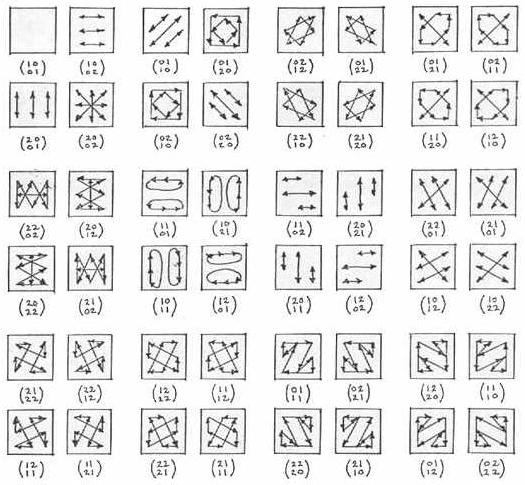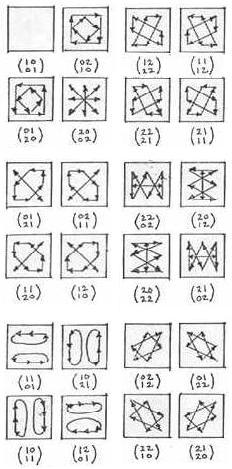Visualizing GL(2,p). Expository Note. March 26, 1985
"The typical example of a finite group is GL(n,q), the general linear group of n dimensions over the field with q elements." -- J. L. Alperin

The 48 actions of GL(2,3) on a 3x3 coordinate-array A are illustrated above. The matrices shown right-multiply the elements of A, where
| A = | (1,1) (1,0) (1,2)
(0,1) (0,0) (0,2) (2,1) (2,0) (2,2) |
Actions of GL(2,p) on a pxp coordinate-array have the same sorts of symmetries, where p is any odd prime.





